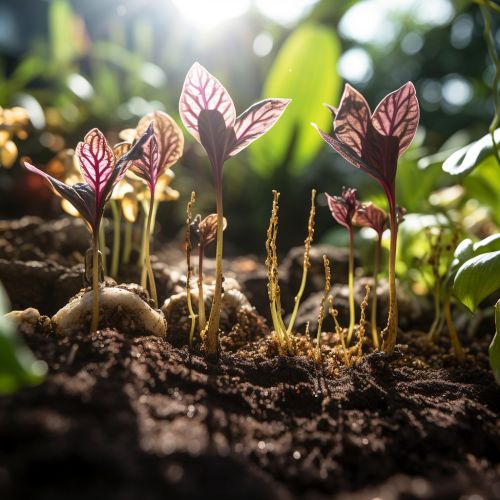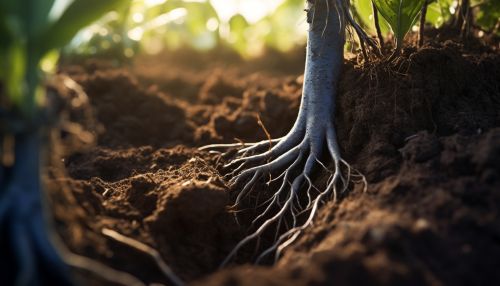The Science of Plant-Microbe-Soil Interactions and Nutrient Cycling
Introduction
The science of plant-microbe-soil interactions and nutrient cycling is a complex field that involves the study of the intricate relationships between plants, microbes, and soil, and how these relationships influence the cycling of nutrients in the environment. This field of study is critical to our understanding of ecosystem function, agricultural productivity, and environmental sustainability.
Plant-Microbe Interactions
Plants and microbes engage in a wide range of interactions, from mutualistic relationships that benefit both parties, to antagonistic relationships that can result in plant disease. These interactions can have profound impacts on plant health, growth, and productivity.


Mutualistic Interactions
One of the most well-known examples of mutualistic plant-microbe interactions is the relationship between legume plants and rhizobia bacteria. Rhizobia are able to fix atmospheric nitrogen, converting it into a form that plants can use. In return, the plant provides the bacteria with carbohydrates and a protected environment within root nodules. This interaction is critical for nitrogen cycling in many ecosystems, and has been harnessed in agriculture to improve crop productivity.
Antagonistic Interactions
Not all plant-microbe interactions are beneficial. Some microbes, such as the fungus Phytophthora infestans, which causes potato blight, can have devastating effects on plant health and productivity. Understanding these antagonistic interactions is critical for the development of effective disease management strategies.
Soil Microbe Interactions
Soil microbes, including bacteria, fungi, and archaea, play a critical role in nutrient cycling. They are responsible for the decomposition of organic matter, releasing nutrients back into the soil where they can be taken up by plants.
Decomposition and Nutrient Release
When plants and other organisms die, their remains are broken down by soil microbes in a process known as decomposition. This process releases nutrients such as nitrogen, phosphorus, and potassium back into the soil, where they can be taken up by plants.
Nutrient Immobilization
In addition to releasing nutrients, soil microbes can also immobilize nutrients, taking them up and storing them in their cells. This can temporarily reduce the availability of nutrients for plant uptake, but when the microbes die and decompose, these nutrients are released back into the soil.
Nutrient Cycling
Nutrient cycling is the process by which nutrients move through an ecosystem. In terrestrial ecosystems, this process is largely driven by the interactions between plants, microbes, and soil.
Nitrogen Cycling
Nitrogen is a critical nutrient for plant growth, but it is often in short supply in the soil. Nitrogen cycling involves several key processes, including nitrogen fixation, nitrification, and denitrification, all of which are mediated by soil microbes.
Phosphorus Cycling
Phosphorus is another critical nutrient for plant growth. Unlike nitrogen, phosphorus is not abundant in the atmosphere, so it must be obtained from the soil. Phosphorus cycling involves the weathering of rocks, the uptake of phosphorus by plants, and the release of phosphorus back into the soil through decomposition.
Conclusion
The science of plant-microbe-soil interactions and nutrient cycling is a complex and fascinating field that has important implications for agriculture, environmental sustainability, and our understanding of ecosystem function. By studying these interactions, we can gain insights into the processes that drive nutrient cycling and develop strategies to improve soil health and plant productivity.
